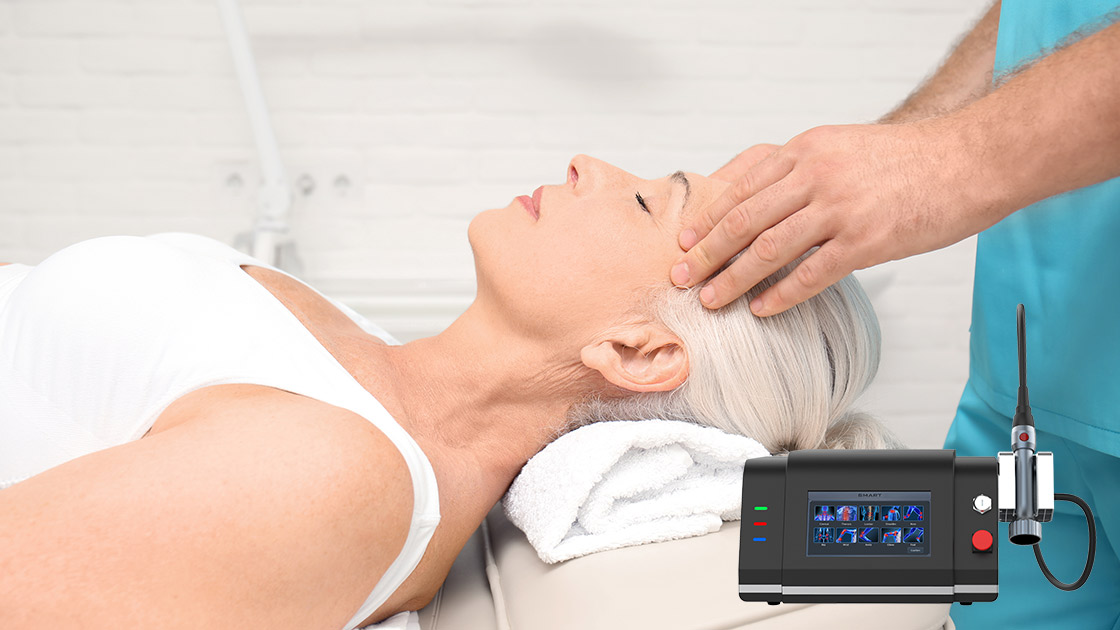Page Contents
Laser physical therapy is a non-invasive medical treatment that utilizes focused laser light to stimulate healing and alleviate pain. By delivering concentrated energy to specific body tissues, it promotes cellular repair, reduces inflammation, and enhances blood flow. Laser physical therapy can offer effective pain management and expedite the recovery process for a wide range of conditions, from musculoskeletal injuries to chronic pain management. Its non-pharmacological nature and minimal side effects make it a valuable addition to modern healthcare, providing patients with a safe and drug-free alternative for improved well-being.
Understanding Laser Physical Therapy
Laser physical therapy, also known as low-level laser therapy (LLLT) or cold laser therapy, is based on several fundamental principles:
Photochemical Effect: At its core, laser physical therapy relies on the photochemical effect. When specific wavelengths of laser light are applied to body tissues, they interact with cellular components called chromophores. These chromophores, often found in mitochondria, absorb the laser energy and stimulate a cascade of cellular reactions. This leads to increased production of adenosine triphosphate (ATP), which is essential for cell metabolism and repair.
Anti-Inflammatory Effects: Laser physical therapy has been shown to reduce inflammation by suppressing inflammatory mediators and promoting the release of anti-inflammatory cytokines. This makes it effective for conditions characterized by chronic inflammation, such as arthritis.
Pain Reduction: Laser physical therapy stimulates the release of endorphins, the body’s natural painkillers, providing immediate pain relief. It also affects nerve cells, reducing their sensitivity to pain signals.
Different Types of Lasers
Several types of lasers are used in physical therapy, each with specific characteristics:
Low-Level Laser (LLLT): LLLT uses low-intensity lasers or light-emitting diodes (LEDs) with wavelengths typically in the visible to near-infrared range. These lasers do not generate heat and are considered safe for therapeutic use.
Class IV Lasers: These high-power lasers deliver a more significant amount of energy and can penetrate deeper into tissues. Class IV lasers are often used for conditions that require deeper tissue penetration, such as chronic back pain.
Helium-Neon (He-Ne) Lasers: He-Ne lasers emit a visible red light and are commonly used for acupuncture and trigger point therapy.
Gallium Arsenide (GaAs) Lasers: GaAs lasers are suitable for superficial tissue treatments and are often used in the management of soft tissue injuries.
The choice of laser type depends on the specific condition being treated and the depth of tissue penetration required. Laser physical therapy is a versatile modality that continues to evolve, offering safe and effective treatment options for various healthcare needs.
The Applications of Laser Therapy
Laser physical therapy is employed in diverse medical fields, including orthopedics (for conditions like arthritis and sprains), dermatology (treating acne and scars), sports medicine (addressing sports injuries), and dentistry (for conditions like TMJ disorder). Specific examples include using laser physical therapy to alleviate pain in plantar fasciitis, promote wound healing in diabetic ulcers, and enhance recovery from rotator cuff injuries. Laser physical therapy complements other treatments as a non-invasive, drug-free option, often used alongside physical therapy and medication. It differs by targeting the root causes of conditions, accelerating healing, and posing fewer risks compared to surgery or long-term medication use.
Clinical Studies Supporting Laser Therapy Efficacy
Numerous clinical studies have demonstrated the effectiveness of laser physical therapy across various medical fields. For instance, studies on osteoarthritis patients have shown reduced pain and improved joint function after laser therapy treatments. In dermatology, research has highlighted laser therapy’s ability to reduce acne lesions and improve scar appearance. Moreover, trials in dentistry have exhibited its potential for managing temporomandibular joint (TMJ) disorders.
Real-life Case Studies and Patient Testimonials
Chronic Pain Management: John, a 55-year-old suffering from chronic back pain, underwent a series of laser therapy sessions. After treatment, he reported significant pain reduction and improved mobility, enabling him to return to daily activities.
Sports Injury Recovery: Sarah, a professional athlete, injured her hamstring during a competition. Laser therapy sessions helped accelerate her recovery, allowing her to resume training sooner than expected.
Acne Scarring: Emily, who struggled with acne scars for years, sought laser therapy. After 6 sessions, she noticed a marked improvement in her skin texture and gained newfound confidence.
